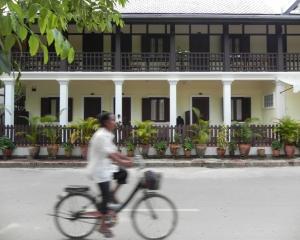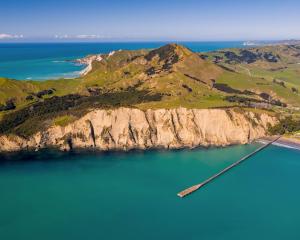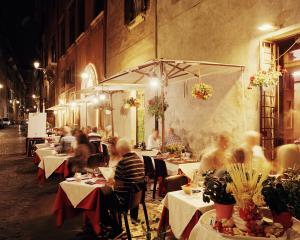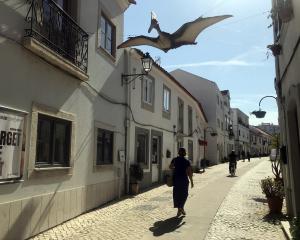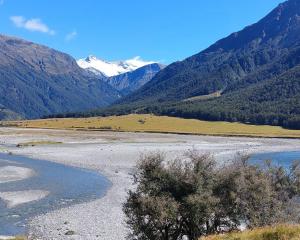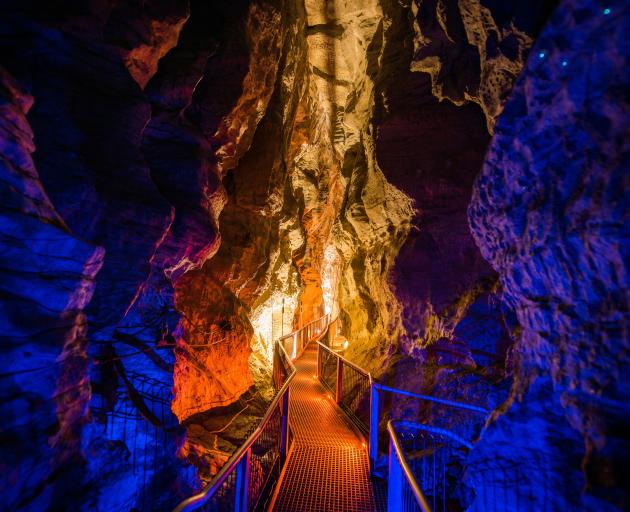
Following the soft sound of thunder, I grasp the metal railing and peer over the edge of the concrete walkway. A dark black river moves swiftly below. As rivers go, it isn’t especially impressive, save for the fact that it (along with the railing, the walkway, and even the solar-powered strip lighting) is 65m below the Earth’s surface.
If the depth is difficult to imagine, picture a 20-storey building plunged into the ground and that’s how far you venture during a 90-minute tour through Ruakuri Caves.
Like most cave systems, Ruakuri is the opposite of a "can’t miss it" attraction. After driving 17km past the King Country town of Te Kuiti in Waikato, I drive another 2km past the world-famous Waitomo glowworm caves, deeper into rural farmland, to a carpark. From there our tour guide Alastair walks us down a dirt track and around a small hill to a large hole in the Earth. Manage to end up here by accident and it would take a particular kind of person to venture into the gloom alone.
The first person to discover the cave didn’t even get very far, according to Māori legend. About 300 years ago, stories suggest a young warrior was hunting for birds near the cave’s entrance when he was attacked by two kurī (wild dogs). Luckily, he escaped. Unluckily, after telling his chief, Tanetinorau, about the attack he was promptly sent back to kill the dogs for their precious fur. The cave was then named Ruakuri, meaning "Den of Dogs".
Thankfully, there are no wild canines when we enter the mouth of the cave and pass through a heavy steel door, which leads to the most spectacular sight; a gigantic concrete cylinder with a spiral walkway that descends into the ground.
From the moody orange lights to the uncanny echoes, everything takes on a surreal, cinematic quality, as if we’ve tumbled into the plot of a sci-fi movie, or a fictional villain’s lair.
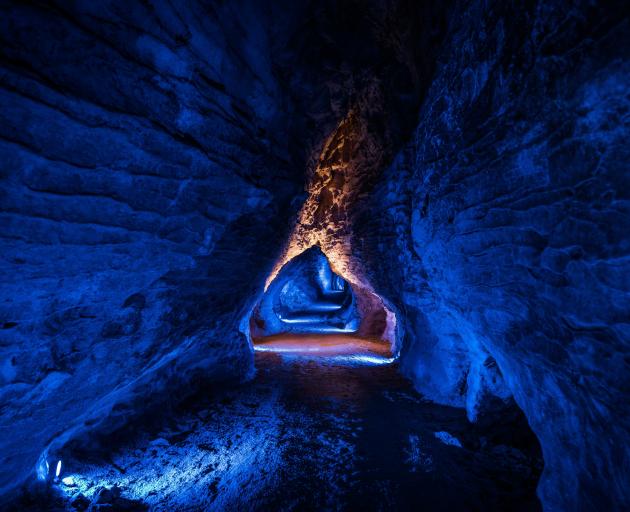
The legend of the warrior isn’t where the cave’s enigmatic history ends. In te ao Māori, it’s believed your first breath is borrowed from Papatūānuku, the Earth mother, and when you pass, you must return it, Alastair explains. In Waitomo, the caves serve as a path spirits take to return to her.
Unfortunately, in a story that is all too familiar, James Holden, who took ownership of the land above the cave (and whose descendants still own much of it), was unaware of this when he opened it to the public in 1904. As the second cave in the region to open as an attraction, it quickly became popular with visitors, who enjoyed the impressive limestone features and "spiritual" feeling. That feeling is no surprise, given the original entrance — a wooden boardwalk — was placed directly over the remains of a sacred burial site.
Following government buyouts and legal battles, the cave was closed in 1988 and stayed closed for 18 years. Finally, in 2005, it was reopened to the public; this time with an awareness and sensitivity towards its sacred status.
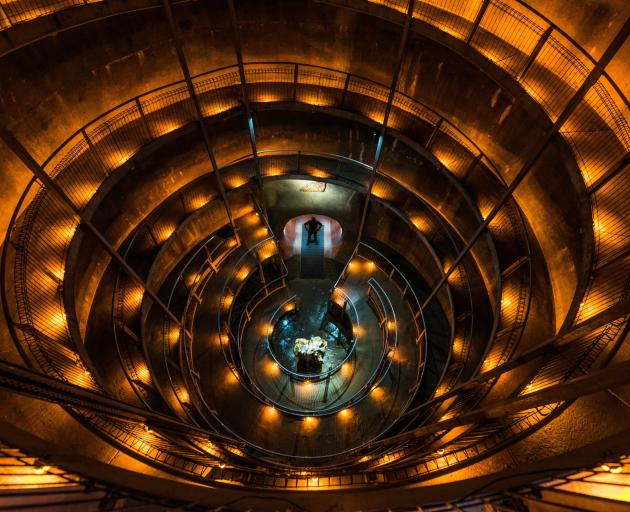
If anything, it resembles a lofty cathedral; the smooth concrete pathway like an aisle, with rocky walls stretched up to the heavens (or in this case the ground) on either side.
"Things are named after how they look down here," Alastair says, pointing out sheetrock hanging in impossibly soft folds and straws that resemble small drinking straws, columns where a stalactite and stalagmite have made a pillar, and flow rock that looks like flowing lava.
There are, of course, the little stars of the show; glowworms. Although, I prefer the te reo Māori name, titiwai, which translates to "stars above the water".
One of the purest forms of natural light, they really are a sight worth travelling for, clustered across the walls like a thick Milky Way, glowing blue and white against the immense blackness. I’m admittedly horrified to discover they are carnivorous maggots who eat their siblings and then die promptly after procreating. But, as creatures go, they’re undeniably enchanting.
The other phenomenon in the cave (albeit, a less breathtaking one) is the ground we walk along. Funnelled into the cave through a 65m-long pipe drilled into the Earth, the concrete isn’t just a feat of engineering but a world-class one, which has made Ruakuri one of the few wheelchair and pushchair-accessible caves in the world.
Nearing the end of the path, the air takes on a slightly sharper bite. At this point, we’re close to the original cave entrance and the sacred burial site, where it’s believed spirits pass through. These aren’t ghosts, ghouls or poltergeists, Alastair explains, nothing evil or spooky but simply a movement of life force that creates the cool air.
Of course, others tell a story about geography and air pressure, he adds, which isn’t necessarily more or less "right". Simply another moment where nature, science and spirituality weave together to create an unforgettable experience.
Checklist: Ruakuri Caves
GETTING THERE
Follow the signs to Ruakuri Caves past Waitomo Village, in Waikato.
ACCOMMODATION
Waitomo Homestead is a perfectly located, affordable spot for travellers visiting Waitomo.
DETAILS
Prices for the 1.5-hour Ruakuri Cave Tour start from $87 for adults and $33 for children.
Booking is essential.
For more information about the tour and Waitomo, visit waitomo.com/glowworms-and-caves/ruakuri-cave

